Does Batman celebrate Christmas? That’s a loaded question, as the holiday has both its original religious intent commemorating the birth of Jesus Christ and the modern, commercialized deification of consumerism and Santa Claus.
It's apparent that both Batman and alter ego Bruce Wayne are not particularly religious. Some comic book characters are specifically religious, like Jewish Ben Grimm, Irish Catholic Matt Murdock and Islamic Simon Baz. But those that aren’t, like most Western fictional characters, default to unspecified Christian. Thomas and Martha Wayne, for instance, are generally portrayed with crosses adorning their headstones.
There’s always the possibility that Batman is an atheist. It would make sense considering his cold, logical mind. But that slot is already taken by DC’s Mr. Terrific, and it’s hard to deny the divine when there’s been an honest God angel, Zauriel, as a member of the Justice League. So Batman is probably at best agnostic, at worst a lapsed Episcopalian.
Of course it depends on the writer.
For instance, in Secret Origins #6 (1986), Roy Thomas has the “Golden Age” Batman (wiped out of continuity during Crisis on Infinite Earths) telling his Uncle Philip that he says his prayers every night, and promises God that he will avenge his parents.
By contrast, Neil Gaiman has a recently deceased Batman, after witnessing his own eulogy, confess to his mother's ghost in Whatever Happened to the Caped Crusader? (2009), “I don’t…actually…believe in an afterlife. You know that? I don’t believe there’s a place you go if you’re good, when you’re done. I’ve tried to believe, but I can’t. This is just me alone in my brain, isn’t it, mom? I mean, you’re not really here.”
Of course, just a few years earlier he talked with his dead parents in Greg Rucka’s Death and the Maidens (2004), so there is that tricky question of continuity.
The Golden Age Batman is long gone, and a grown Batman may have grown out of the young Bruce Wayne’s belief system. Whatever Happened to the Caped Crusader?, meanwhile, is more of a meta dissection of serialized fiction, showing Batman continuously dying and being reborn. Only Rucka’s contribution can be accepted as the official version (well, until 2011’s New 52 reboot), and his near-death experience is starkly non-denominational. So he won’t be attending church any time soon, yet Christmas pops up again and again as a powerful setting for the Dark Knight.
How can it not be when Santa Claus actually exists in the DC Universe, as he’s shown delivering coal to Darkseid in the “Present Tense” segment of DCU Holiday Bash II (1998)?
The simple reason for the return to Christmas is its surface characteristics make for great atmosphere, with heart and good cheer in contrast to Batman’s Scrooge-like manner. Batman Returns (1992) has the snowy setting and the aesthetic of the Macy’s Day Parade gone to hell while channeling Charles Dickens. The Batman: The Animated Series’ episode “Christmas With the Joker” sees the Clown Prince of Crime escaping Arkham Asylum on a rocket propelled Christmas Tree. The video game Batman: Arkham Origins also takes place on Christmas Eve. But again, these are all slightly different versions, and not the “real” Batman.
When it comes to the comics, granted validity through sheer ubiquity, the simplest answer is that when winter time comes around the issues published tend to reflect that time of year. Of course that can't help but complicate the issue of “comic time”, meaning the snail's pace passage of years that keeps characters timeless until they need to be aged up.
So what do both the obligatory and purposeful depictions of Christmas mean for Batman/Bruce Wayne? For the sake of argument, five instances of the modern comic book Batman, the character maintained on a monthly basis by hundreds of writers from 1986 to 2011, will be analyzed to demonstrate how he engages with Christmas and what it means to him. These include The Long Halloween (1996-1997), No Man’s Land (1999-2000), Dark Victory (1999-2000), Gotham Central’s “Soft Targets” (2003-2004), and Batman: Noël (2011). Like with most things, Bruce Wayne responds very differently to Christmas than Batman.
![]() 'The Long Halloween' (Jeph Loeb, Tim Sale)
'The Long Halloween' (Jeph Loeb, Tim Sale)
Jeph Loeb’s The Long Halloween takes place during the Year One era, working as a sequel of sorts to the Frank Miller classic. It opens about six months after that book, itself starting in January and ending on December 3 in such a way as to withhold Christmas from the rookie superhero. Jim Gordon is a Captain and he and District Attorney Harvey Dent have formed an alliance with Batman to take down the Falcone mafia. As they start to make progress, however, a “Holiday” serial killer begins a spree of murders on Halloween that continue on every major holiday of the month until, you guessed it, the next Halloween.
Issue #3 sees the Joker up to his usual antics, stealing presents from families and scouring the city looking for Holiday. He figures there’s only room enough for one homicidal maniac, while Batman visits Arkham Asylum for a talk with Julian Day, the Calendar Man. He interrogates the inmate about Holiday’s psyche but comes away wanting. What is important, however, is the dichotomy of Batman and his greatest enemy: the Joker is having a high time, complete with Santa hat and Grinch-y antics, while Batman hardly acknowledges December 25. He isn’t seen without his mask off once this issue, his job getting in the way of fun like any good workaholic.
![]() 'No Man’s Land' (Greg Rucka, Various Artists)
'No Man’s Land' (Greg Rucka, Various Artists)
No Man’s Land was a year-long event that encompassed all the Bat books at the time in which Gotham City, devastated after an earthquake, was cut off from the United States. Although written by several writers, the latter days of 1999 saw Greg Rucka taking the reins (even writing a novelization). As the story winds down, the timely intervention of billionaire industrialist/super villain Lex Luthor helps get the city back on its feet, and right as the doors are about to be opened the Joker shows up to cause trouble. He kidnaps all of the babies in Gotham City with the intention to “murder hope.”
The Joker is a recurring motif in these Christmas-focused stories, because his flamboyant nature and appearance go well with the holiday exuberance while also ironically adding an edge of darkness. There’s also the fact that he’s an overused character and pops up just about everywhere. What’s more fascinating is the Christmas Eve dinner with Bruce Wayne, Alfred Pennyworth, Dick Grayson and Leslie Thompkins. Out of costume, gathered together with surrogate family and tree adorned in the background, he appears to be happy and entirely comfortable in the environment.
![]() 'Dark Victory' (Jeph Loeb, Tim Sale)
'Dark Victory' (Jeph Loeb, Tim Sale)
Dark Victory is the sequel to The Long Halloween, and much like its predecessor it also takes place over more than a year with each issue covering a major holiday. This time the Hang Man Killer is the culprit, and is taking out policemen as opposed to mafia. Issue #3 sees the Scarecrow, not the Joker this time, infiltrate the Gotham Toy Factory to place vials of his fear toxin inside of dolls that will be distributed across the city. Meanwhile, Selina Kyle, whom Bruce Wayne has been dating off and on, waits at Wayne Manor, having been stood up by the driven super hero.
Once again Batman supersedes the needs of Bruce Wayne, but there is an intriguing bit of inner monologue about his childhood. Batman muses, “When I was a child, my mother would take me down to the Gotham Toy Factory each year at Christmas time. She wanted to impress upon me how lucky we were to give and receive. She did this by collecting toys from the Factory and donating them to charity.” So he takes the Scarecrow’s machinations as a personal offense. The “psychologist turned psychopath,” meanwhile, makes for a provocative dissonance with the holiday, his macabre appearance made more frightening by his perverse singing of carols such as “Christmas is Coming”.
![]() 'Soft Targets' (Ed Brubaker, Greg Rucka, Michael Lark)
'Soft Targets' (Ed Brubaker, Greg Rucka, Michael Lark)
Admittedly the first three choices have to depict Christmas due to the year-long structure of the storylines. “Soft Targets”, however, is set at Christmas time as a specific choice by writers Ed Brubaker and Greg Rucka. Gotham Central was the amazing series that lasted from 2002 to 2006, grounding the story of Gotham City's police department in something like reality. Part of that was showing a naturalistic passage of time, so as the series progressed it tended to follow what time of year it was taking place in. The first issue of the four-part story arc, issue #12, consequently was released in December, 2003.
The Joker is yet again the villain, although this is admittedly one of his best appearances. He's terrorizing the city with a sniper rifle, starting off with assassinating the mayor. In a moment that surely inspired The Dark Knight, he turns himself into the police as part of his master plan, but not before shooting out the bat signal. Batman, being a distant figure in Gotham Central, doesn't have much of a presence in this story arc, but it is fascinating to consider that this is one of the many Christmases he's experienced on a sliding timeline that is unavoidable with his interminable existence, seemingly in direct opposition to this version only having been active a decade or so.
![]() 'Noël' (Lee Bermejo)
'Noël' (Lee Bermejo)
In Batman: Noël, Christmas is the entire focus. One of the Joker’s henchman, an impoverished man named Bob, narrates a story to his son about the time he encountered Batman, except that it’s told as A Christmas Carol. Batman is, of course, Scrooge, while Catwoman is the Ghost of Christmas Past, Superman is the Ghost of Christmas Present and the Joker is Ghost of Christmas Future. The stories align rather closely, with Batman being particularly grouchy because he is sick, possibly with pneumonia. Written and drawn by Lee Bermejo, he maintains the hyper-detailed, realistic style from his previous Batman work, the Brian Azzarello-penned Joker.
Similar to Batman Returns, this is a story in which Batman and Bruce Wayne have become so sedentary in their world views that they have to be jarred back to happiness. Batman believes Bob is just a criminal and isn’t willing to accept him as a multifaceted human being until confronted with the truth. It’s Batman that implores Bob, who has a gun on the Joker, to show his son, “the man you truly are,” learning a valuable lesson about everyone's potential for change. Of course it’s the more generous Bruce Wayne that gives Bob a job and a luxuriant Christmas Tree.
Christmas is inevitable. It comes around every year for everyone, even the Dark Knight. Accepting the real-world mechanics at face value, his delicate characterization, curated by a stable of creators, can result in a clearly defined attitude: Batman has no time for Christmas, but there's a place in Bruce Wayne's heart for it. He may be stuck forever in a feedback loop of adventures that leave little time for religion, but any chance to surround himself with those he loves is enough for an orphan always seeking a surrogate family.

About the author
A professor once told Bart Bishop that all literature is about "sex, death and religion," tainting his mind forever. A Master's in English later, he teaches college writing and tells his students the same thing, constantly, much to their chagrin. He’s also edited two published novels and loves overthinking movies, books, the theater and fiction in all forms at such varied spots as CHUD, Bleeding Cool, CityBeat and Cincinnati Magazine. He lives in Cincinnati, Ohio with his wife and daughter.
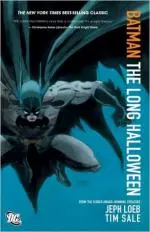 'The Long Halloween' (Jeph Loeb, Tim Sale)
'The Long Halloween' (Jeph Loeb, Tim Sale)
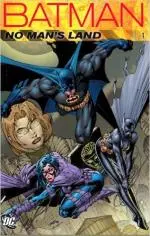 'No Man’s Land' (Greg Rucka, Various Artists)
'No Man’s Land' (Greg Rucka, Various Artists)
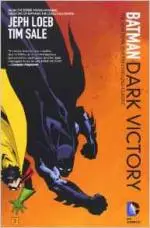 'Dark Victory' (Jeph Loeb, Tim Sale)
'Dark Victory' (Jeph Loeb, Tim Sale)
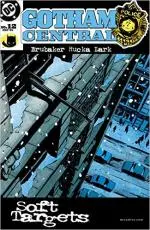 'Soft Targets' (Ed Brubaker, Greg Rucka, Michael Lark)
'Soft Targets' (Ed Brubaker, Greg Rucka, Michael Lark)
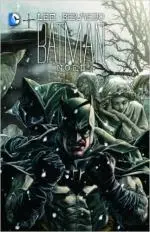 'Noël' (Lee Bermejo)
'Noël' (Lee Bermejo)







